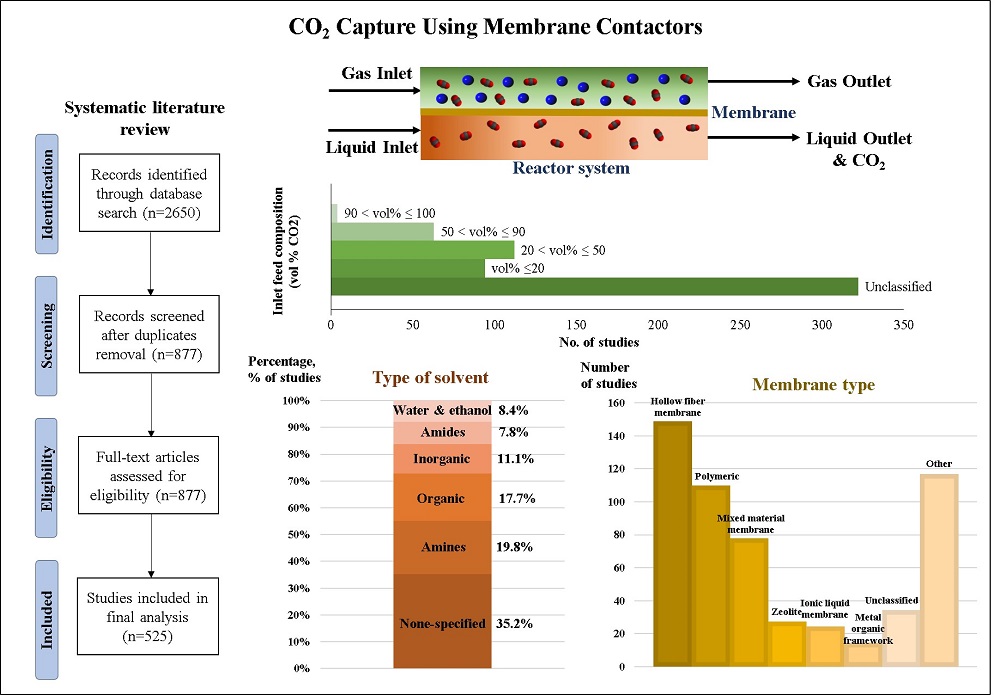There are currently three main technologies which have been developed and implemented to capture CO
2 from fossil fuel combustion plants. These are pre-, post- and oxyfuel combustion [
6]. The latter comprises of burning the fuel with almost pure O
2 as an alternative to air. In order to regulate the flame temperature, some part of the flue gas is recycled back into the furnace/boiler segment [
6]. The key purpose of using this technology is to produce a flue gas with a high concentration of CO
2 and water vapour; and consequently, remove the CO
2 from the flue gas by dehydration coupled with a low temperature purification process [
6]. The pre-combustion technique is a mature technology and has been used in the chemical industry for over 90 years. Here, the primary fuel is processed with steam and air/oxygen to produce synthesis gas (mixture consisting mainly of H
2 and CO). Excess H
2 and CO
2 are produced by reacting steam and CO in a shift reactor. The CO
2 is then removed, typically by a physical or chemical absorption process, subsequently in a H
2-rich fuel which can be used in various applications, such as boilers, furnaces, gas turbines, engines and fuel cells [
7,
8]. Post-combustion is also often used to remove CO
2 which is produced from the flue gases generated by the combustion of the fuel in air. Normally a liquid solvent is used to obtain the small fraction of CO
2 (3%–15% by volume) which is present in the flue gas consisting mainly of N
2. Current post-combustion systems will often use an organic solvent, such as monoethanolomine (MEA), in a modern pulverised coal or natural gas combined cycle power plant [
8,
9].
















